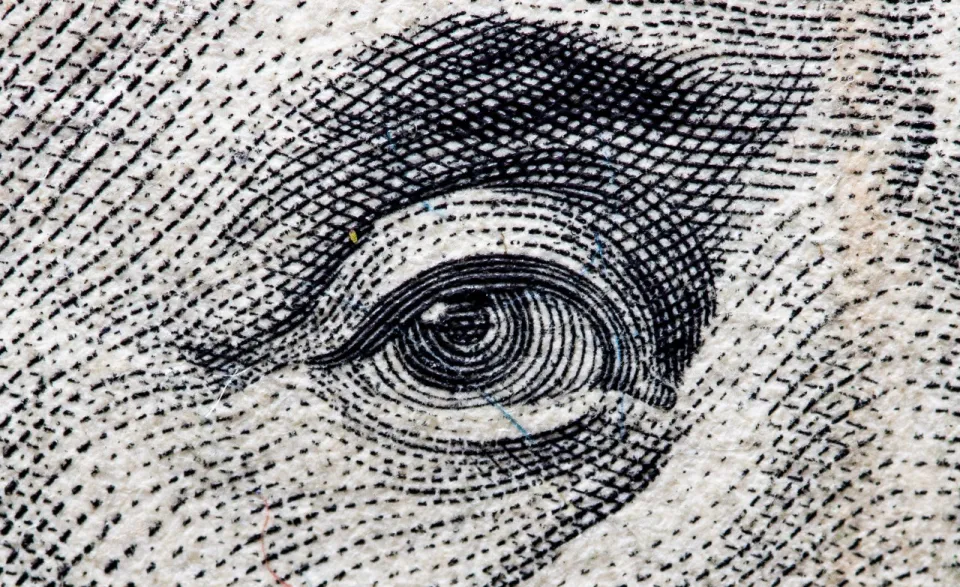Money can be found in various forms and here we explain the two most common.
Who has not thought about this topic? A concept that accompanies us in our daily lives, that we carry in our wallets and that currently has greater weight in its digital form: How is money created?
The US Department of the Treasury is responsible for controlling the printing and manufacturing of dollars as we know them. While the coins that are in circulation are manufactured by the office of the United States Mint, having its main center of operations in Philadelphia, Pennsylvania, although it has manufacturing centers for this metal in Denver, San Francisco and West Point, New York; The banknotes are printed by the Office of Engraving and Printing in one of the facilities located in Washington, DC and Forth Worth, Texas, to go directly to the Federal Reserve, an organization that has control of the distribution of this paper money in the country.
In general, physical money only represents between 3% and 8% of the total handled in the world.
The main function of physical money, not only in the United States, but in the world, is to ensure that private banks have enough cash to meet their obligations to their customers. In short, that when you go to the ATM of your bank, you have enough cash that you need.
The cost of printing a piece of paper money like the $10 dollar, for example, is about 3 cents on the dollar, so the government makes a profit of $9.97. This is known as seigniorage.
With this information, ColdFusion asks a valid question: If the government is able to make good profits by manufacturing money and thereby reduce the amount of taxes people pay, why don’t they just print more physical money? The answer lies in inflation.
Suppose a ruler arrives who stipulates that more money be printed and achieves that the average citizen has a million dollars, anyone would think that that would be wonderful. But if we tell you that with that million dollars you can only buy one apple, then the magic ceases to exist. This means that, given the excess printing and manufacturing of paper money, the purchasing power of people is reduced and their currency has lost its value. Does the case of Venezuela sound familiar to you? This loss in value is known as inflation.
But if this type of money is only about 3% of the money that is handled, what is the other?
How is digital money created?
Now, today, the vast amount of money that exists is generated by the world’s private banking sector. About 97% of the world’s money supply is digitally created by banks. In other words, most of the money used on the planet is privatized.
Banks created digital money after years of persuading lawmakers to meet people’s needs. The bank run arises when many of the depositors want to get their money at the same time, but the banking institutions do not have it. After this, the banks argued that it should be legally allowed to create more deposits than actually exist, based on debt.
However, the idea of using debt as “money” dates back to 1704, when the English passed the Promissory Notes Act. Promissory notes, precursors to credit cards, were papers signed by the lender and borrower that the money would be repaid. This we know as debt could also be considered as part of the money.
At the present time, this type of system allows for growth. To grow, you need more debt. This is based on the fact that, for you to buy a house, you go to the bank that in turn generates this digital money with which you will pay the house to an owner, who in turn, having this money in his bank account, will be able to buy other things. This is how money is generated to circulate to grow the economy of a country.
This can be seen more clearly in mortgage loans which handle large amounts of (digital) money. When you pay your debt, in reality, the only thing that remains is the interest you paid, which becomes profit for the bank or lender. Simply, if you do not pay your mortgage, the bank keeps it.
In 2008, when a real estate bubble emerged, more money was borrowed for real estate than returned, and the economic system collapsed because it did not have enough cash to sustain itself. Digital money showed its weakness and overconfidence.
The management of money today is so complex that, depending on the historical context in which it is lived, new ways of giving value to things arise. Bank-created digital money should not be confused with man-made cryptocurrencies, which are a new foray into the world’s money market.
And now with the coronavirus pandemic, we are not surprised that methods are made known or implemented that do not allow, above all things, that the currency, in our case, the dollar, lose its value and its meaning, so both banks and the government have to play with our own capital, whether in the form of debt, taxes or in another way that we have not yet imagined.
